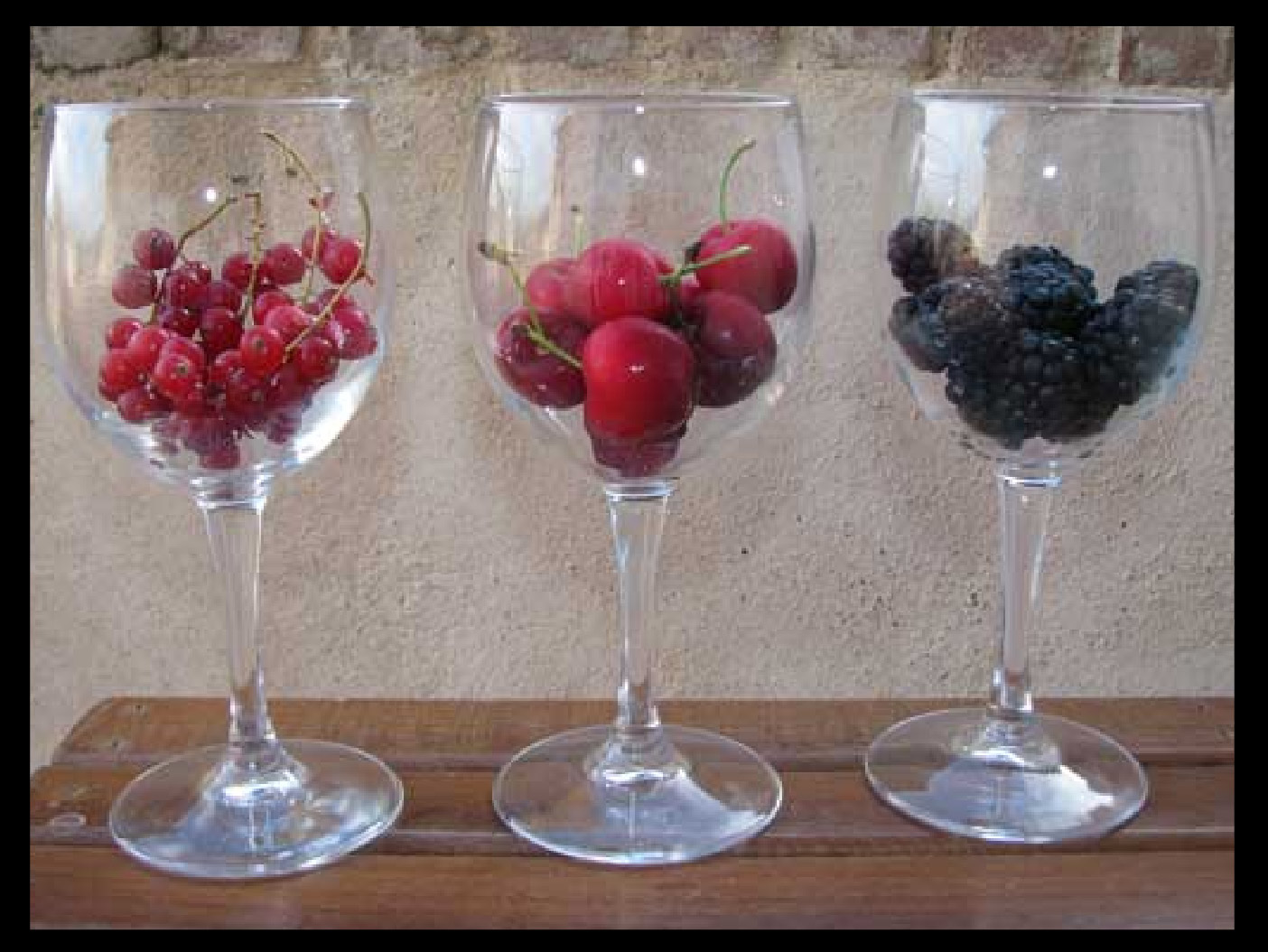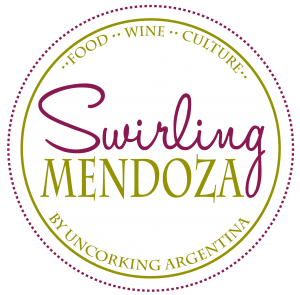Learning Wine Aromas

What happens in your mouth when you sip a wine is important, a wine´s texture, shape, acidity, sweetness, and length are all important style and quality markers. And though the tongue is the strongest muscle in the body, the nose is really the powerhouse sensor when it comes to a cup of vino.
There are hundreds of identifiable aromas in wine, scents that stretch the gamut from old band aid to seashells, horse sweat to pineapple. Practically every scent is possible, but the question is – is your nose ready?
The Aroma Cloud
When I smell a glass of wine, I picture a wispy cloud of aromas rushing out of my glass and into my nose – as though I were inhaling the steam vapors of a hot cup of coffee. This invisible cloud is thick with layers and layers of different aromas, tightly packed and intricately intertwined. The challenge is separating the aromas, putting a name to the wispy perfumed vapors, and turning a deeply sweet luscious red aroma into …say, raspberry jam.
Aroma identification is all about experience and memory. Though you may be able to sense every aroma in a glass of Riesling, you can´t possibly identify a smell you haven´t experience before.
What does passion fruit smell like? You may be able to summon up a rough mental image of the tropical fruit – gooey gray seeds, yellow speckled outer skin – but do you know what it smells like? If you haven´t smelled it before, your nose is going in blind.
Your nose, unlike your tongue, is not a muscle. But it can be trained. And your smell memory banks can be strategically stocked. A successful smeller takes that complex cloud of aromas and relates it to things she´s smelled before.
How to Train your Nose
Certain wineries are offering aroma rooms, such as Belasco de Baquedano that displays 46 different aromas commonly found in wine. According to the Belasco de Baquedano staff, the room is meant to allow visitors to “sharpen their senses and allow them to store away in their memory all the aromas that can be discovered in wines.”
Pulenta Estates also offers an aroma game where visitors are blindfolded and smell items such as freshly cut grass, cinnamon and chocolate – a kind of guided nose workout. “We depend a large part on visual aid to pick up on aromas. In wine tasting, we do not have the use of our eyes to describe the aromas we are experiencing, as we are not looking at chocolate, strawberry, or anything other than a red or white liquid. The practice forces you to rely only on the sense of smell to trigger your memory to then place a specific name to the aroma you are experiencing,” says Michelle Schromm, Hospitality & Tourism Manager at Pulenta Estate.
This aroma room experience can also be replicated with the Le Nez Du VinWine Aroma Kits are collections of scents that mimic aromas commonly found in wine. However, the kits can be a bit costly and tend to take the romance out of the experience.
The final option is create your own aroma kit and tasting party. Smelling socially is highly recommended as not everyone has the same sensory perception, in fact some people are entirely unable to perceive certain aromas (this is known as anosmia). Friends that smell together will detect a larger number of aromas and you´ll start to notice trends. Perhaps you´ll notice that many people detect black pepper in Syrah, or cherries in Pinot Noir. These commonly found aromas are known as benchmark aromas and can help you identify grape varieties in a blind taste test.
Planning your Wine Aroma Party
The first step is to prepare or purchase a variety of natural scents – these are things readily available to you in your house, refrigerator, spice rack and local grocery story. Unlike traditional wine scent kits, “These natural aromas are much more subtle than for example an essence or oil, but are the true expression of what the aroma is,” says Michelle Schromm.
- Fruits: Lemon, Grapefruit, Pineapple, Mango, Strawberry, Cherry, Peach, Pear, Banana, Passion Fruit, Plum, Cassis
- Vegetal/ Floral/ Herbaceous: Lavender, Violet, White Flowers, Thyme, Cut Grass, Mint, Eucalyptus, Olive, Hay, Green Pepper
- Spice: Licorice, Black Pepper, White Pepper, Anise
- Other: Leather, Musk, Rubber, Band-Aid, boiled potato, Popcorn, onion
- Oak: Dark Rich Chocolate, Toasted Bread, Caramel, Sawdust, Cinnamon, Clove, Vanilla, Toast, Bacon, Coffee, Charcoal, Coconut, Dill
- Dairy: Butter, Yogurt, Cheese
How do you play?
You can begin by smelling (or blind smelling) all of the aromas that you´ve gathered for your kit. Once you feel comfortable with this set of smells, begin pairing them with different wines.
Pour a serving of wine in a glass (professional tasting glasses are ideal as they funnel aromas right into your nose, making specific scents easier to detect and identify). Swirl and smell.
Some tasters find that one long powerful whiff is what it takes to put an aroma into words, while others prefer several smaller sniffs to fully experience the smells. There is no one right way to smell. It´s a matter of knowing your nose and how it can be most effective.
If an aroma is immediately identifiable, write it down. But if a specific aroma doesn’t come to mind, try to narrow it down. Do you smell fruit, flowers, herbs or spices? What color? Red fruit or black? Young, ripe, dry or cooked? What kind? Smell big to small, start with a broad category and narrow it down.
Once you´ve got your list of detected aromas, cross check them against the wine´s label, or an online wine description. Did you find some of the same things? If not. Smell the aroma in the aroma kit or spice collection. Perhaps you weren´t able to detect green pepper in Cabernet Sauvignon, in that case smell your sliced green pepper and stick your nose back into the cup of Cabernet. Did you get it now?
You may decide to smell a varietal and then smell a typical aroma found in that varietal. For example, Syrah with peppercorns, Merlot with chocolate, Cabernet Sauvignon with green pepper, and Pinot Noir with cherries.
Every time you identify an aroma, stock that smell away in your memory. Notice how it differs from aromas that are similar to it, and try to identify that smell in a variety of wines and wine styles.
Training your nose is a life-long undertaking. Some days you´ll remember to smell and pay attention, other days you´ll simply pour the wine and never think twice about the wispy cloud so full of mystery.
____________________________________________________________________________________________
Interested in experiencing the world of Mendoza for yourself? Let us build your own custom wine tour in the land of Malbec, Mendoza Argentina!
Our team of highly passionate, skilled trip planners wants to get to know you so we can construct the perfect getaway. We pull from our large network of local winemakers, adventurers, chefs, artists and more to introduce you to a side of Mendoza, Argentina that you won’t see with any other tour agency.
Ready to get started? Tell us who you are and what you love – and we’ll use that to build your perfect trip! Click here to get started!






